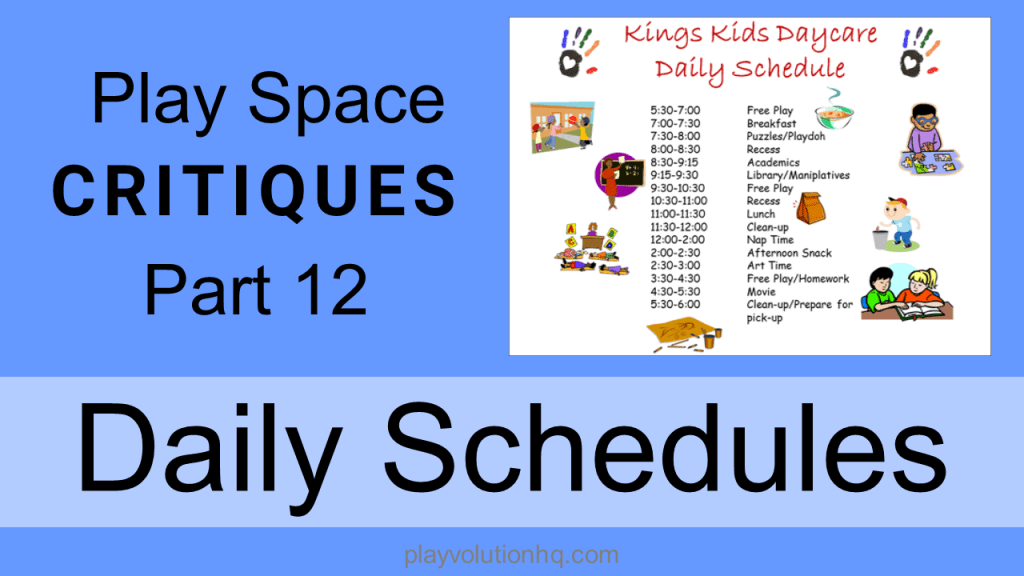
In this play space critique, we’re looking at daily schedules. They take up a tiny bit of space, usually posted near the entry for all to see, but have an outsized impact on each day’s flow and feel. I collected the following schedules from a collection of program handbooks I’ve been reviewing and from an internet search. I tried not to do any cherry-picking and think the following collection is pretty representative of what’s being offered in many, many early learning settings.
Before we dive in, 9 slides with quotes from 8 books about time, schedules, and play. The takeaway is that young children learn best through self-directed play and need big blocks of uninterrupted time for such play.
On to the sample daily schedules!
An infant room schedule. Big blocks of on-the-floor play time; that’s nice to see. Not sure what Bright Baby Activities are. If you know, clue me in in the comments. Whatever they are, I’d wager most human infants are fine without them.
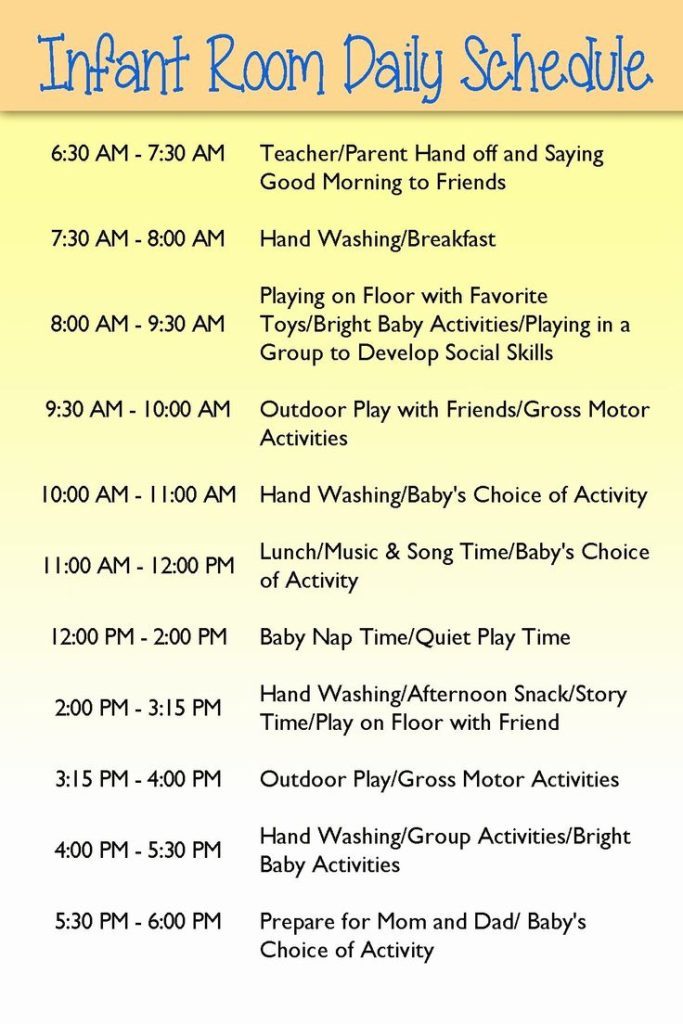
Daily schedules are not for kids. They generally can’t read. Even if they can, they would have to drag a chair across the room and stand on it since these schedules are always posted at adult height.
A toddler room daily schedule. I counted 19 transition times. 19 times for everyone to stop what they’re doing, regroup, and focus on doing something different. Lots of 30-minute blocks. How much time in those blocks is sucked up by the upheaval of transitioning?
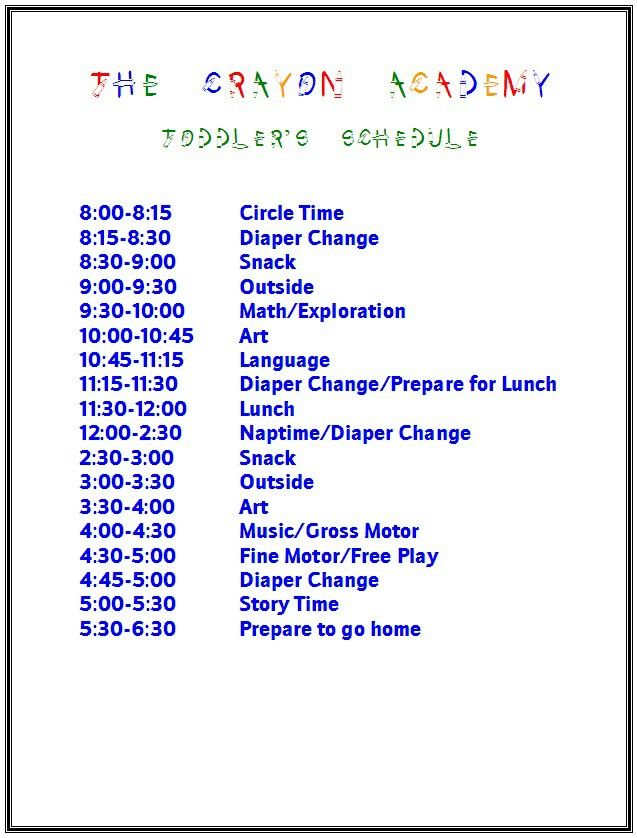
Of course, daily schedules are often little more than wall decorations, aren’t they? They’re posted because some outside entity (licensing, accreditation, quality rating, etc.) says they must be. Daily schedules are often just posted to tick a box or meet a standard. Parents may glance at them from time to time when their child is new to the room. In the case of this one, for the sake of the children, I hope it’s not rigidly adhered to.
These little superheroes must get in a lot of cardio hustling from one thing to the next. Choice Time is over an hour long, so that’s nice–if there’s some real choice involved. My experience is that Choice Time choices are often limited to a handful of teacher-approved activities that kids may or may not be interested in. Options like rough and tumble or weapons play are often missing from the approved list.
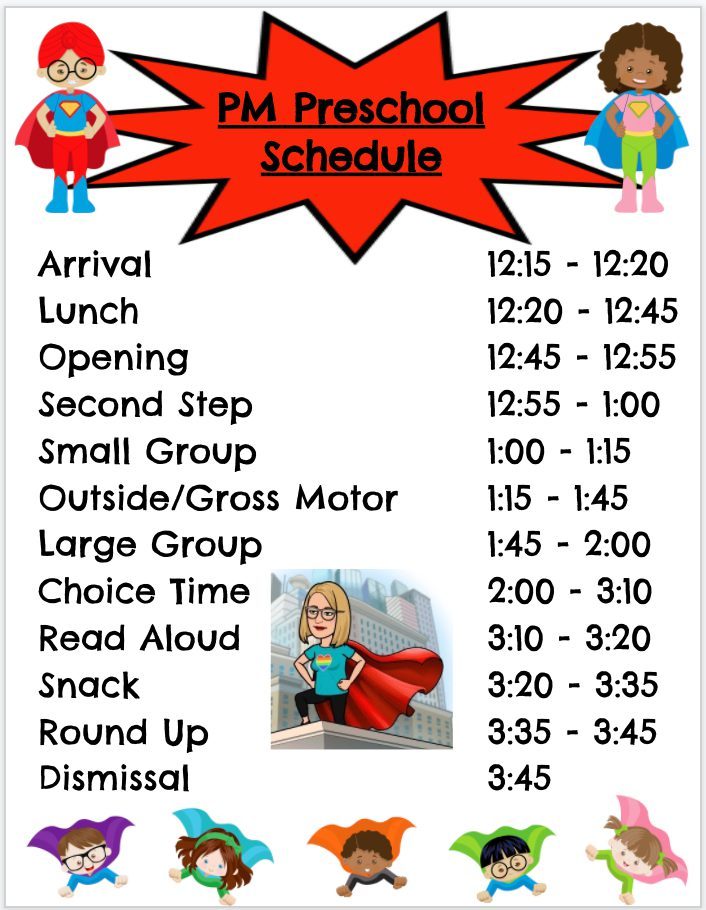
Imagine being the kid who wants nothing to do with puzzles or playdoh forced to spend half an hour with them daily. AN HOUR OF MOVIE TIME!? Because young children are not getting nearly enough screen time already?
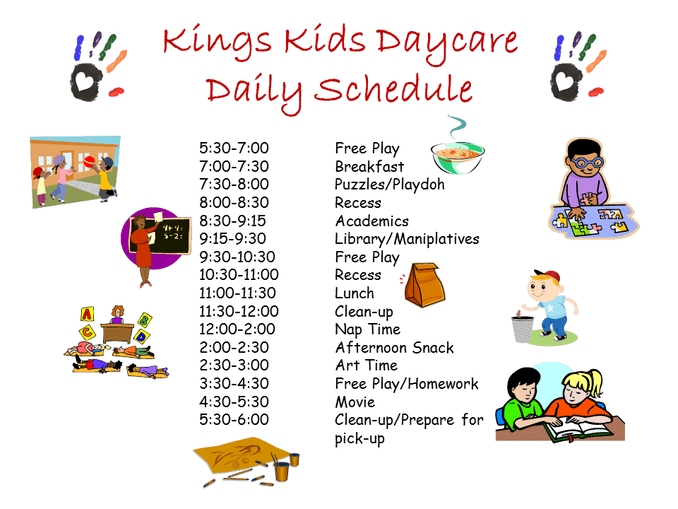
Also, 45 minutes of something called Academics. I tried imagining what that meant, and a cold chill ran down my spine. The clipart implies it involves an adult standing before a chalkboard and lecturing. Preschoolers love a good lecture.
There’s an hour of free play followed by 30 minutes of recess, so that’s nice. Calling it recess is an example of how terminology and practice from schools are seeping into early learning settings.
One thing a lot of these daily schedules include is a lot of sit-down time, which is sad.
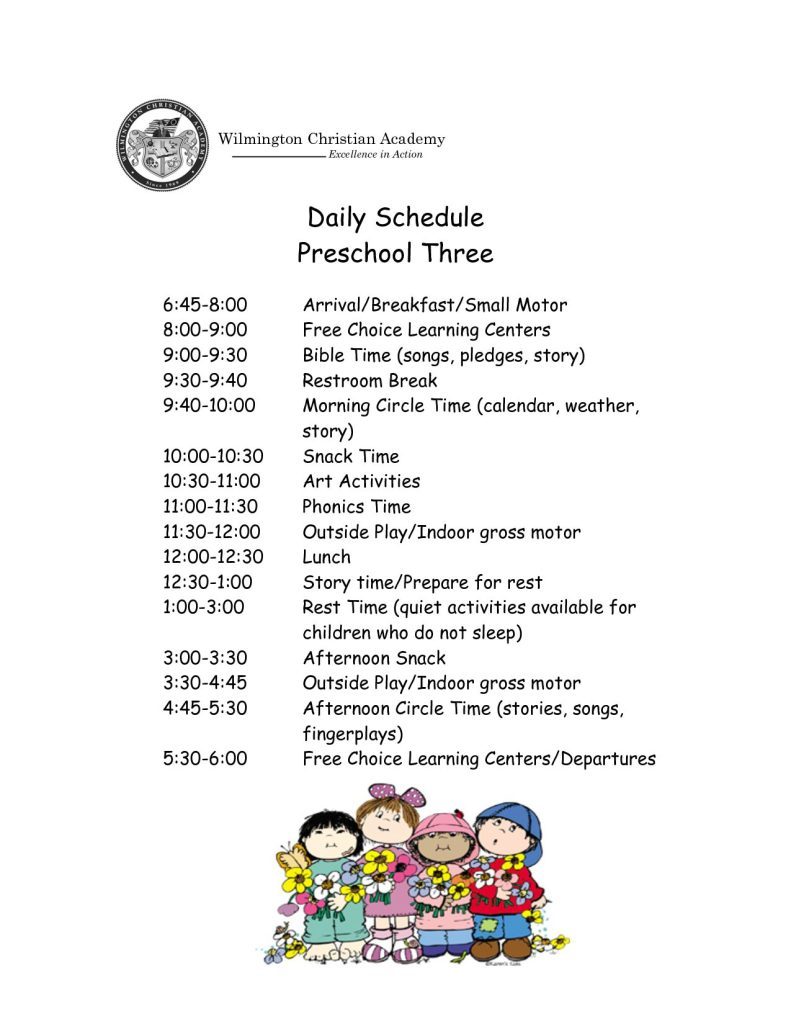
A big part of the early years revolves around integrating the 8 sensory systems, which requires kids to be up and moving. Most kids are too sedentary. A more developmentally appropriate daily schedule would not have kids stationary for hours and hours each day. More movement also seems to magically reduce behavior problems since Blake isn’t being sent to time out six times a day because he can’t sit nicely on his carpet square.
This one recognizes that daily schedules are really for parents and tries to explain what’s happening during the day. I also like the honest admission that this daily schedule is subject to change at any time. That’s nice to see.
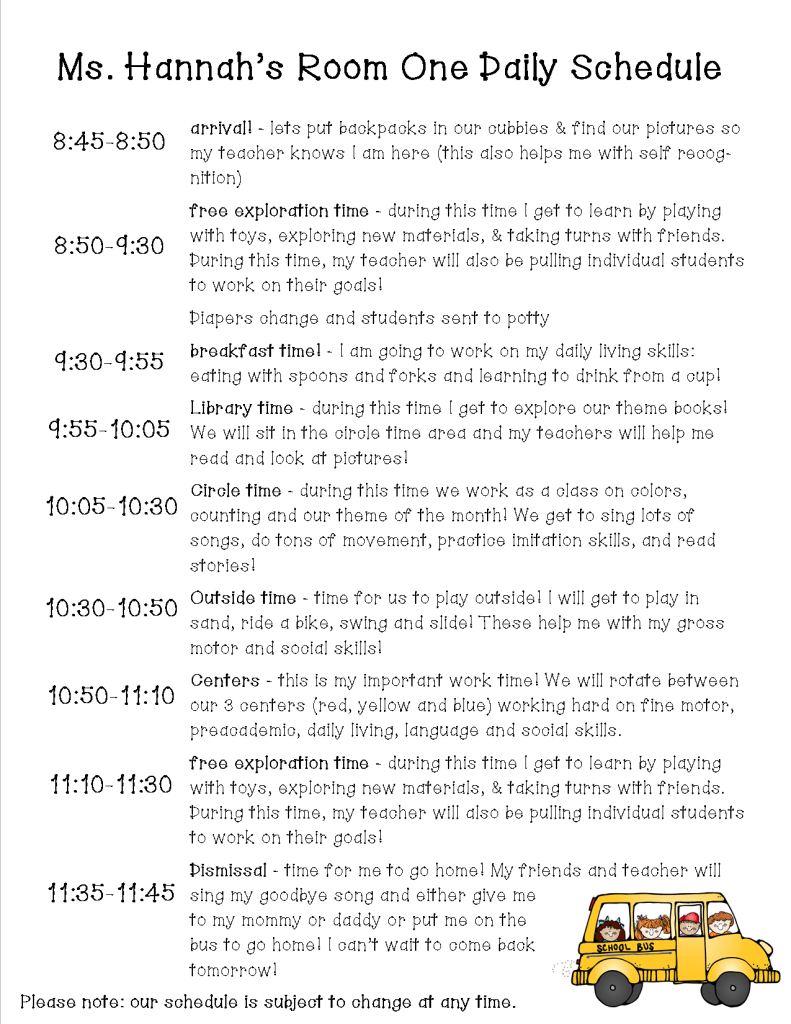
The day has 2 Free Exploration Times. The description’s first sentence is ok, but the second has me wondering if the teacher really pulls kids aside to work on their goals. Who do the goals really belong to? I love to imagine the kids are: “My goal is to make a Batman costume out of construction paper! Where’s the stapler?” I suspect, however, that the goals being pursued are rarely Batman-based and belong to an adult.
Another schedule with a lot of explanatory text for parents and other adults interested in what’s happening throughout the day. As with the others, the goal is to assure outside stakeholders that learning is happening. Sharing clear and concise policies and procedures regarding the program’s approach to play and learning is a better way to share that information.

And that appears to be happening less than it should. I’ve been deeply diving into program policies and procedures over the last six months. After reviewing over 120 parent handbooks, I’ve found very few that detail how they support learning. Many devote more space to explaining how they implement time out–or their process for suspending a child–than they do to clarifying their approach to play and learning.
Daily Schedules Wrap Up
Young children thrive with flexible structure and predictability while resisting rigor. Many daily schedules paint a picture of rigidity. Parents and other stakeholders benefit from clear and concise explanations about what is happening in the classroom, why it’s happening, and how it is happening. Daily schedules are not the most effective place to prove that information.
Have thoughts on the photos–or thoughts on our thoughts? Share them in the comments. You’ll find more play space critiques here.
Brought to you by Explorations Early Learning
Contribute content to Playvolution HQ
Browse Trainings
Post Author
Jeff Johnson is an early learning trainer, podcaster, and author who founded Explorations Early Learning, Playvolution HQ, and Play Haven.








Leave a Reply